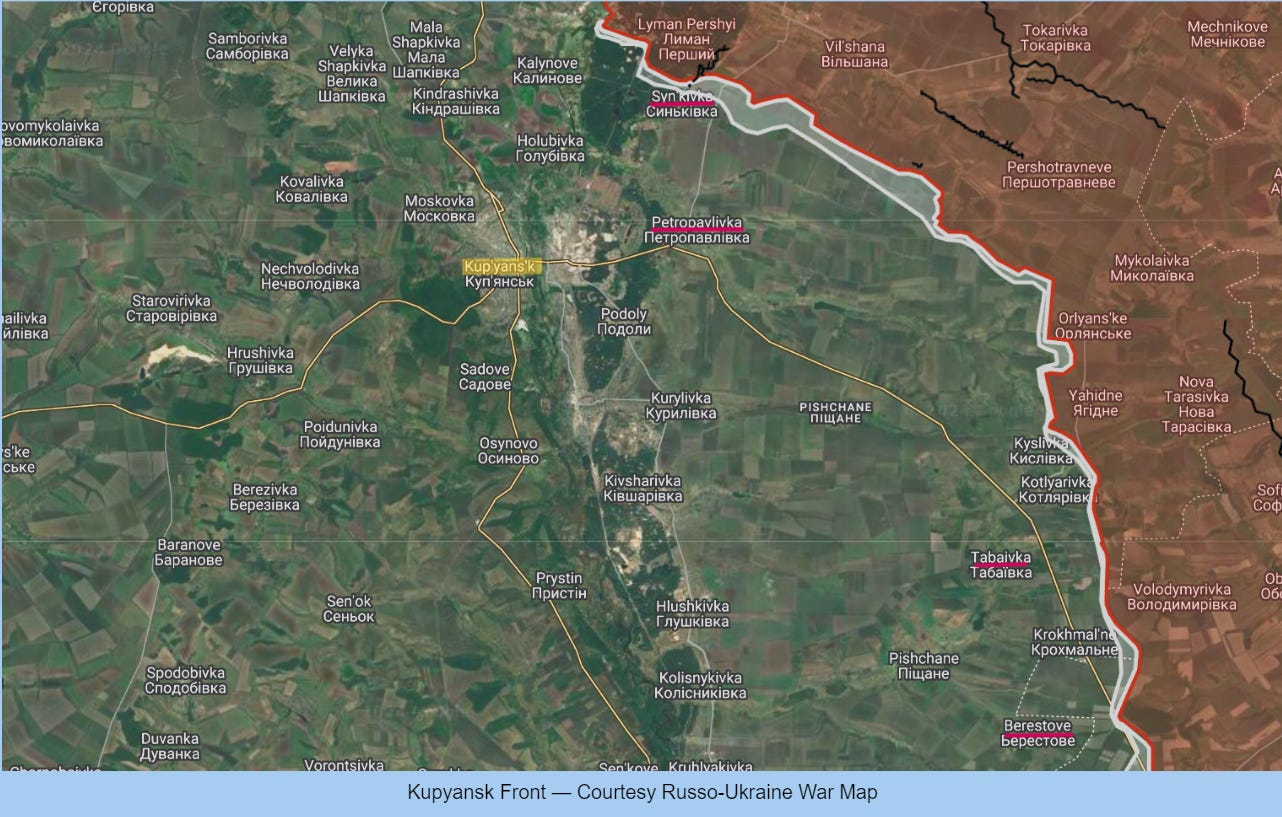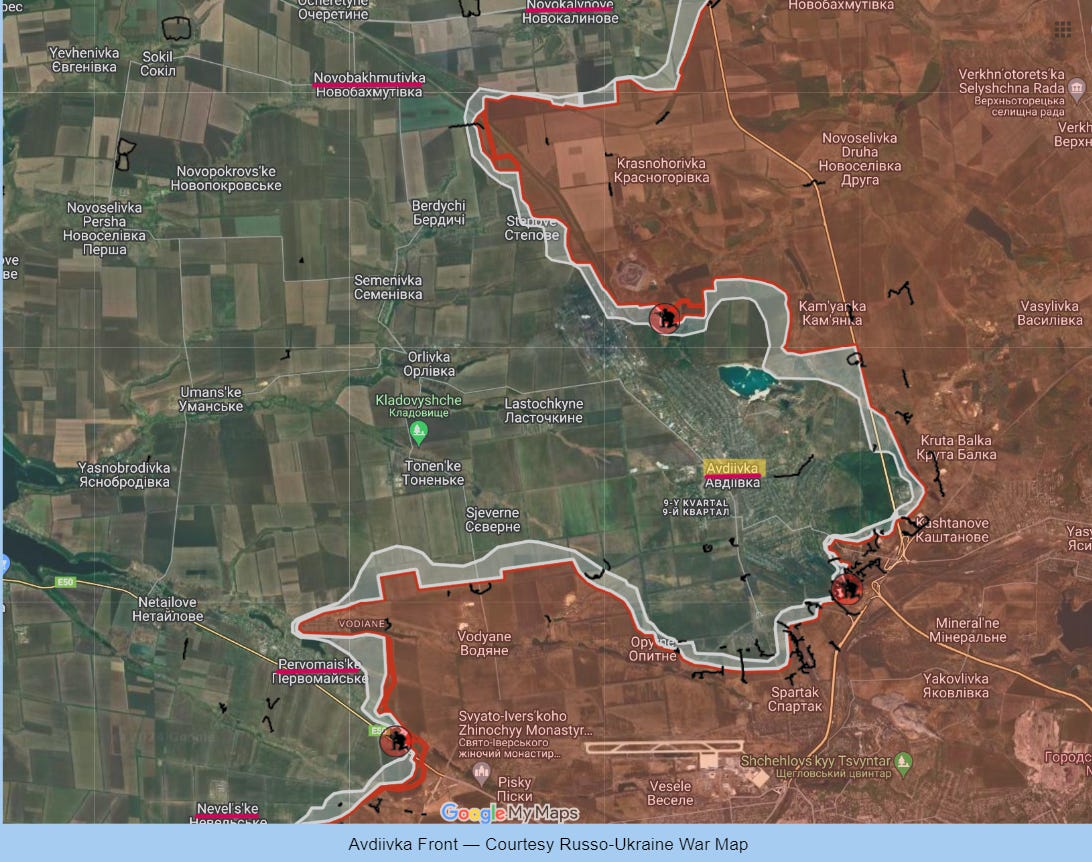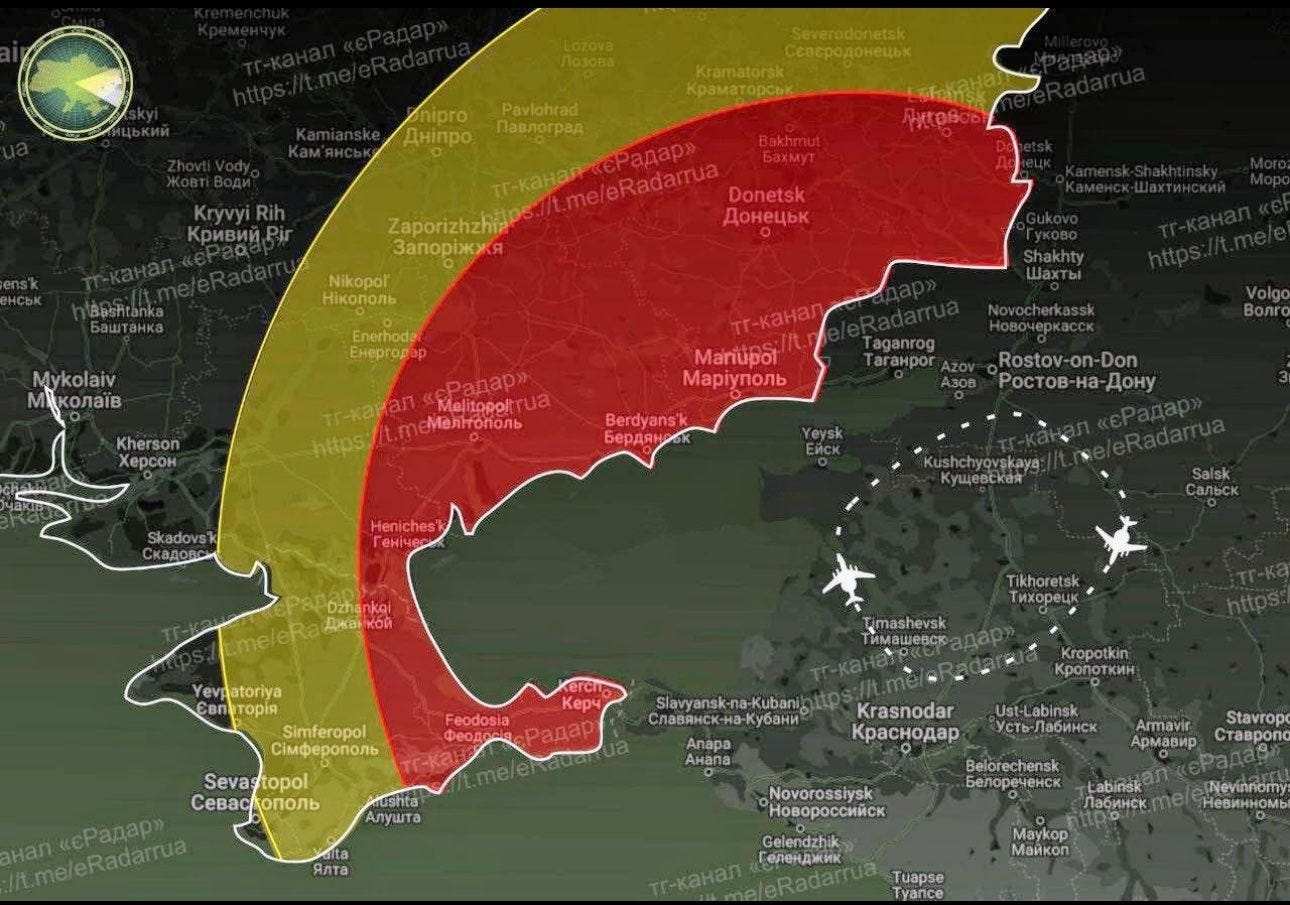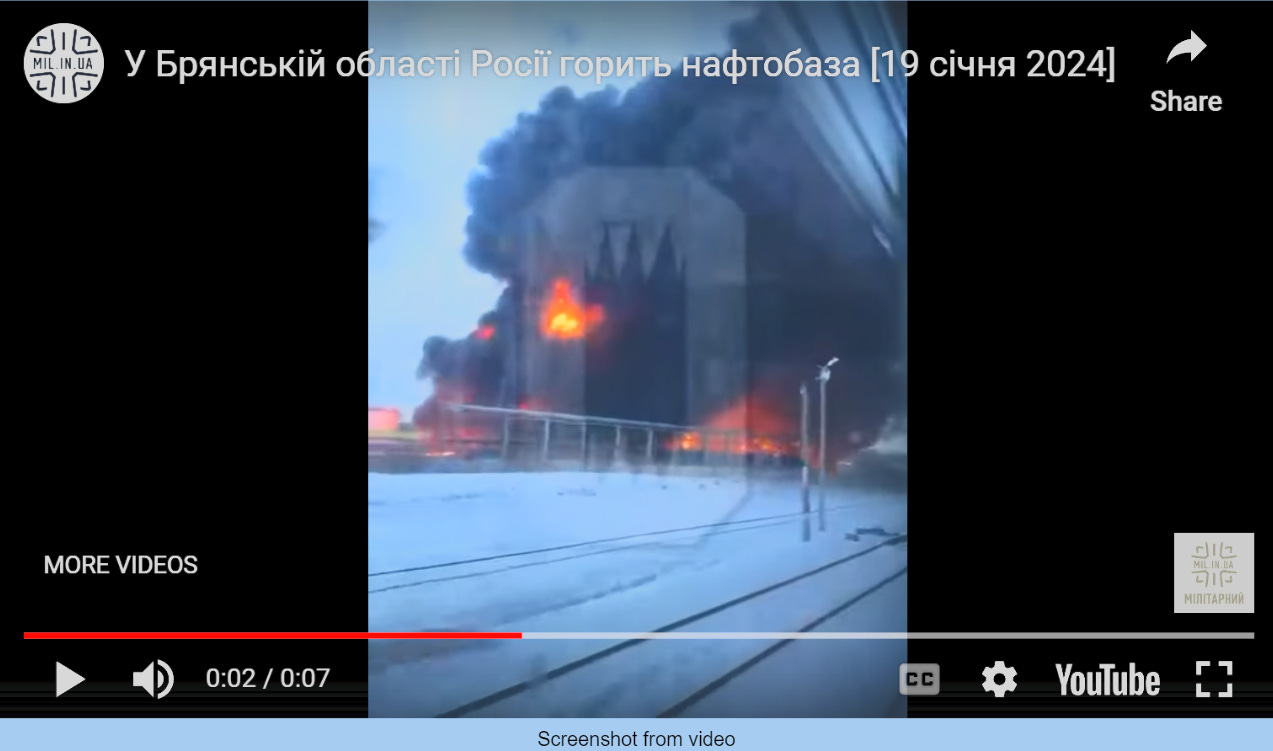Slava Ukraini! Since June 2023 I have provided a daily draft for the Ukraine War Brief Podcast collecting news from over 40 sources daily much of which ends up in the script. I will make this Draft available here for those who wish to keep up with events on a daily basis.
INSIDE UKRAINE
ALONG THE CONTACT LINE
GSAFU Morning Report
The General Staff of the Armed Forces of Ukraine in its situation update at 06:00 on Jan.19 stated that it was the 695th day of full-scale invasion of the Russian Federation against Ukraine.
During the past day, combat engagements took place. Over the past 24 hours, the enemy carried out 2 missile strikes, 81 air strikes, and 45 MLRS attacks across the positions of our troops and settlements. As a result of the Russian attacks, unfortunately, there are dead and wounded among the civilian population. Destruction and damage to residential buildings and other civilian infrastructure.
The Khortytsia operational-strategic group is responsible for the Kup’yans’k, Lyman, and Bakhmut axes, in the northeastern part of Ukraine.
Kup’yans’k axis: Ukrainian defenders repelled 18 attacks of the enemy near the settlements of Synkivka, Petropavlivka, Tabayivka, Brestove (Kharkiv oblast).
Lyman axis: Ukrainian defenders repelled 15 attacks of the occupiers near Terny, Yampovlivka (Luhansk oblast) and 8 attacks near the Serebryansky forest and Bilogorivka (Donetsk oblast).
Bakhmut axis: Ukrainian forces repelled 2 attacks near Bohdanivka (Donetsk oblast).
The Tavria operational-strategic group is responsible for the Avdiivka, Mar’inka, Shaktars’ke, and Zaporizhzhia axes, in the central-eastern and southeastern part of Ukraine.
Avdiivka axis: Ukrainian defenders continue to hold back the enemy who keeps trying to encircle Avdiivka. AFU soldiers are standing their ground and inflicting major losses on the invaders. Ukrainian Defense Forces repelled 27 enemy attacks near Novokalvnove, Novobakhmutivka, Avdiivka, and 17 near Pervomais’ke and Nevel’s’ke (Donetsk oblast).
Mar’inka axis: Ukrainian Defense Forces continue to hold back the occupiers in the vicinities of Krasnogorivka, Mar’inka and Novomykhailivka (Donetsk oblast). Troops repelled 15 attacks in that area
Shakhtarske axis: Ukrainian defenders repelled 4 attacks of the enemy to the west of Staromaiors’ke and south of Urozhaine (Donetsk oblast)
Zaporizhzhia axis: Ukrainian Defense Forces repelled 5 attacks near Robotyne and west of Verbove, (Zaporizhzhia oblast).
The Odesa operational-strategic group is responsible for Kherson, Qırım, (also known as Crimea) and the Black Sea
Kherson axis:Ukrainian defenders continue to expand the bridgehead. Despite significant losses, the enemy does not abandon its attempts to dislodge Ukrainian troops from their positions. Over the past day, the enemy carried 11 unsuccessful assaults on the positions of the Ukrainian Defense Forces.
TEMPORARILY OCCUPIED TERRITORIES
Nothing to report.
THE HOME FRONT
Ukraine uses hybrid air defense system
Ukrainian Air Force spokesman Yuriy Ihnat stated that Ukraine employs hybrid air defense systems that are not long-range; instead, they provide local protection for military facilities and critical infrastructure.
He said that hybrid air defense systems are nothing new. "The fact that American and Ukrainian specialists were able to, let's say, combine the Soviet elements with the American ones. This practice already works with aviation, we know that our fighters launch American bombs and missiles, which we managed to adapt," Ihnat said.
According to him, the implementation process was not easy: Ukrainian and American experts gathered in the United States to test these systems at US training grounds.
"And the fact that they reported that there is such a first use, the first shootdown, is good for us. Any means that work will certainly be of great benefit. We have no other choice," emphasized the spokesman.
Ihnat explained that hybrid air defense systems are not long-range and can operate at a distance of about 15 kilometers. "Therefore, we cannot expect to shoot down anything at long distances. But why not use them locally to cover critical infrastructure, military facilities, or anything else? If there is a certain stock of anti-aircraft missiles and a place to install them, we will use everything possible," he said.
THE RUSSIAN WORLD
War in Ukraine Drains Nearly Half of Russia’s Liquid Assets
Russia’s government has tapped almost half of the national wealth fund’s available reserves to shield the economy against the fallout from its almost two-year war in Ukraine, leaving it vulnerable to future shocks. Bloomberg reports.
The National Wellbeing Fund’s holdings of cash and investments that can be easily liquidated slumped to 5 trillion rubles ($56.5 billion) at the end of last year from 8.9 trillion rubles before the war, while total holdings fell almost 12% to 12 trillion rubles, Finance Ministry data showed. The value of the fund’s stakes in Russian companies and in bonds that were issued to finance infrastructure projects has surged by more than 2 trillion rubles, according to Bloomberg calculations.
“The total size of the NWF seems quite irrelevant now that a big chunk of it has been invested in Russian shares and infrastructure – essentially illiquid investments,” said Tatiana Orlova, economist at Oxford Economics. “Only liquid investments can be considered as rainy day reserves, the rest is gone.”
The wealth fund, which has taken years to build up its assets, is set to come under further pressure as Russia’s economy continues to be buffeted by sanctions that were imposed by Western nations in response to President Vladimir Putin’s February 2022 invasion of Ukraine. The Finance Ministry tapped around 3 trillion rubles from the fund to cover the budget deficit last year as it ramped up spending on the military and measures to cushion the economy. It plans to take another 1.3 trillion rubles this year.
“If the situation regarding energy prices is completely negative, we will use the National Wellbeing Fund,” Finance Minister Anton Siluanov told reporters last month. “But if we see that it decreases, then we will take other budget balancing measures. It’s clear that we are not interested in nullifying the National Wellbeing Fund and sitting without a penny in reserve.”
Such measures could include the partial privatization of state companies or increasing local borrowing.
Russia cautiously replaces its destroyed A-50 AWACS
On Jan. 19 The UK Ministry of Defence in its intelligence update stated that The Russian A-50 AWACS aircraft shot down by Ukraine on Jan. 14 was replaced by one from its dwindling stocks by Jan. 17. However since coming into service this aircraft has not ventured over the Sea of Azov and has not ventured outside Russian territory in the Krasnodar region, limiting its ability to cover the battlespace.
Some estimates put Russian stocks of the aircraft (valued at $330,000,000) as low as 7 remaining
Ukraine strikes another Russian oil depot
After a drone attack in the Bryansk region of Russia, a fire broke out at an oil depot in the town of Klintsy.
Footage of a massive fire accompanied by smoke is released online and is visible at a big distance from the oil depot.
The Russian Ministry of Defense reported that the drone was allegedly downed in the Bryansk region early in the morning of January 19.
The governor of the region, Alexander Bohomaz claimed that the drone was eliminated by means of electronic warfare, but it managed to “drop a munition on the territory of the oil depot.”
According to him, the tanks caught fire, but there were no casualties. It is worth noting that this is probably not a munitions drop, but a direct hit of the drone into a tank with oil products.
NEWS WORLDWIDE
Scholz's party attempts to justify refusal to transfer Taurus missiles to Ukraine
Germany currently claims to be unable to provide Ukraine with long-range Taurus missiles, citing the need for production expansion, according to a statement made by a member of the Bundestag from the ruling Social Democratic Party of Germany, Johannes Arlt, who is also a member of the Defense Committee.
According to him, German forces currently have a limited number of Taurus missiles. Additionally, the country cannot increase the production of such weaponry to replenish the army's stockpiles.
"Therefore, considering our allied commitments to NATO and taking into account the measures we must take to enhance our own security, it would be wiser not to provide these missiles," added the deputy.
He also emphasized the importance of creating framework conditions for the industry to ensure more reliable production of weapons and ammunition. This is necessary to meet Germany's needs and assist Ukraine.
Ukraine has been requesting Germany to transfer Taurus missiles since last year, capable of targeting objects up to 500 kilometers away. This is crucial for striking targets in the rear of Russian occupiers.
However, Germany refuses such a transfer. Chancellor Olaf Scholz does not support the delivery, fearing "possible strikes on Russian territory."
MILITARY & TECH
Design features are behind why some Russian Kh-47 Kinzhal Warheads Don't Explode
Recently, the Ministry of Internal Affairs of Ukraine showed the disposal process of warheads from Kh-47 Kinzhal air-launched ballistic missile, taken down by Ukrainian air defense during an unsuccessful russian attack. The fact that at least three out of 20 Kinzhal missiles launched by russia in January did not explode upon landing sparked doubts about their systematic malfunctioning.
However, Defense Express reached out to Ukrainian specialists in researching russian weapons, they explained that the non-exploding of warheads is caused not by malfunction but by a conscious design choice on the part of russian engineers.
The Kh-47 Kinzhal has no impact fuze. The detonation is triggered by an electronic system located in the missile's hardware unit where the battery is. The unit is connected to the warhead through wires; when the missile gets hit with an interceptor, the wires are sometimes damaged, rendering the warhead inert.
It is assumed that this design decision of russian engineers was deliberate and prompted by the weapon's layout, the interconnections between its units, and the purpose of the warhead which means to penetrate the target.
Therefore, from the russian perspective, they might view this design not as a defect but a feature and thus not be willing to change it. Or they simply cannot do so, because altering the SA device would mean an overhaul of the entire design for a weapon that has been in development for way too long regardless.
Russian Kh-101 Missiles Differ from Those Used in 2022
A representative of the Defense Intelligence of Ukraine, warns against passive defense and emphasizes the evolving threat landscape.
Vadym Skibitskyi, the representative of the Defense Intelligence of Ukraine, emphasized that the occupiers are adapting rapidly and dismissed the notion of adopting a passive defense strategy.
“Our adversaries are quick learners, demonstrating notable adaptability. To illustrate, consider the Kh-101 cruise missiles – they are significantly different from those employed in 2022. The latest version features an active electronic warfare system, active protection mechanisms, thermal traps, and more,” Vadym Skibitskyi stated.
Skibitskyi underscored the need for comprehensive development, encompassing air defense, safeguarding the defense industry’s production capabilities and implementing counteroffensive measures to prevent territorial losses. Reflecting on the lessons from 2023, he emphasized the imperative of proactive strategies to secure and defend territories.
That’s it for today’s Draft folks if you would like to keep up with events in Ukraine daily please consider subscribing, its free!
Feel free to share this update with your friends. Heroyam Slava!






















